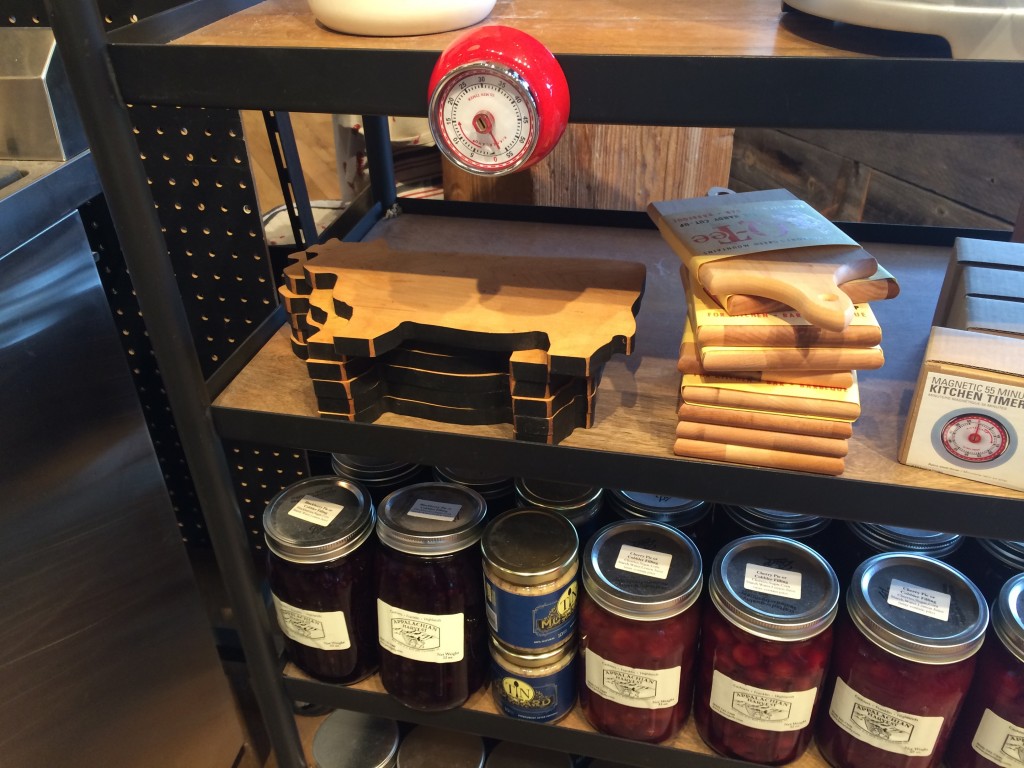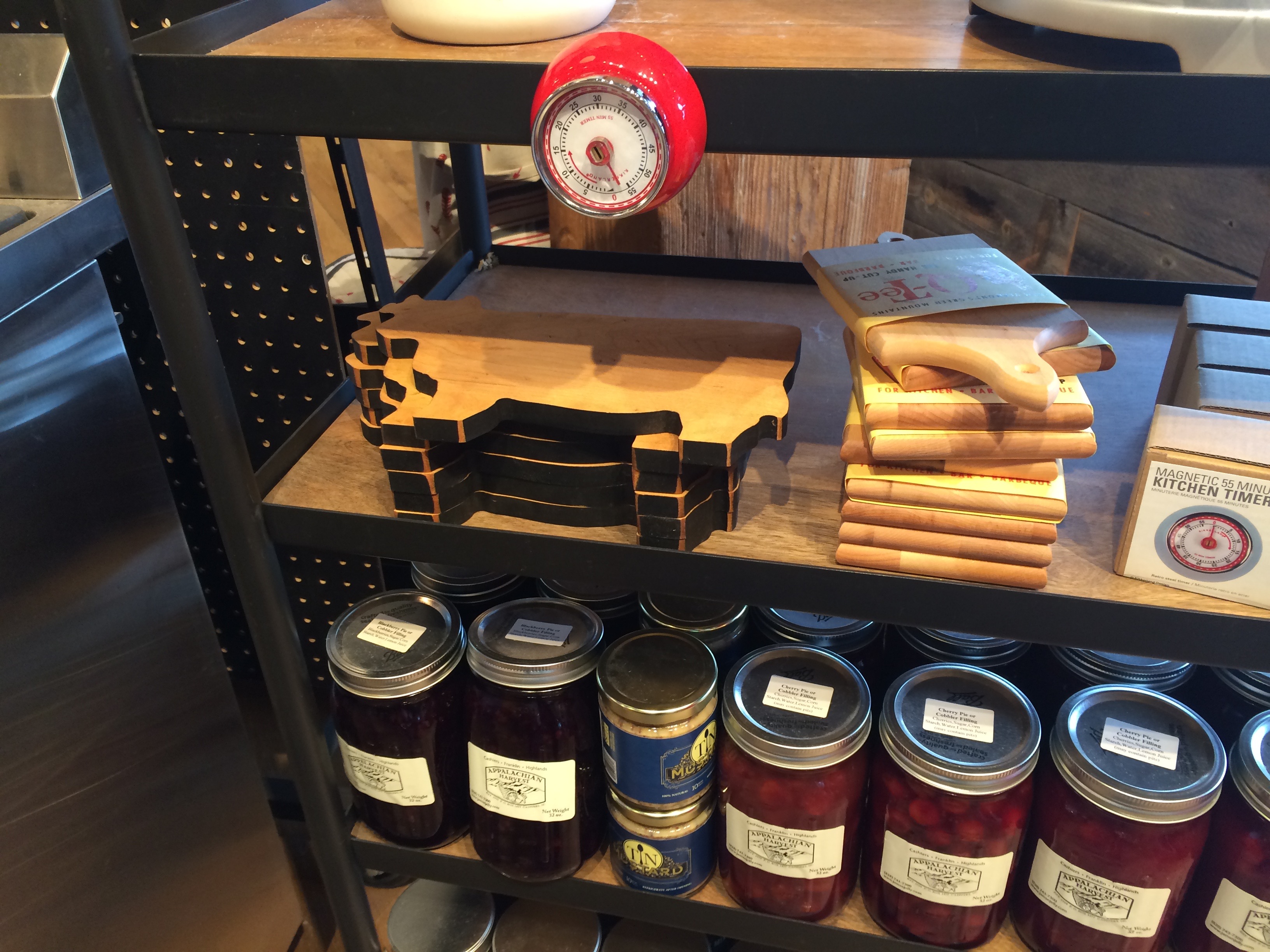About 6,700 cheese boards and cutting boards sell on the Amazon.com. Their prices vary between $5 and $370. Majority of them are rectanglular. However, not a few boards interesting shapes. At one of my favorite Canadian stores, West elm, I found a cow-shaped mini cheese board and cutting board. Its price was $22.

I bought this board mainly because it looked interesting to me. However, a board designer cut a significant portion of it to make it look like a cow, it was not useful to cut vegetables and fruits but ok for serving cheese. This is a typical situation that marketing researchers often study: a trade-off relationship between aesthetic appeal and practical utility. Does this trade-off work? Unfortunately, I do not know whether adding design flavor attracts other consumers or helps makers charge more. However, it successfully attracted at least one person who had virtually no interest in boards before. Probably, this funny-looking board will remind me of a Canadian store and bring much to share with my guests.
***
Reference
Joo, J., & Chung, J. (2019). Are consumer design evaluations trustworthy? Archives of Design Research, 32(1), 47–59.
Background Designers often consider consumer design evaluations. However, whether consumer design evaluations are trustworthy has been rarely discussed. We propose that consumers equate the concept of design with the concept of uniqueness, which suggests that their design valuations are context dependent and unstable.
Methods We test our proposition by conducting one pilot study and three main studies. The pilot study examines which criteria consumers consider when evaluating a design. The three main studies test whether consumer design evaluations depend on the situation and unique products.
Results The results of the pilot study and three main studies demonstrate that subjects evaluated design using aesthetic and functional attributes and their design evaluations were based on the attributes that are not popular in a specific situation.
Conclusions This study contributes to the academic discussion of whether consumer design evaluations are stable. Our findings demonstrate that consumers construct design evaluations on the spot. Therefore, designers who have accumulated professional experience and knowledge, are recommended to follow their own design evaluations rather than the voice of customers.



This post is about a cow-shaped cheeseboard that the writer bought in West elm. The writer said that he bought a cow-shaped cheese board because it looked interesting, which is different from most rectangular cutting boards. Cutting the board into cow shapes added aesthetic appeal, but it became not useful to cut vegetables and fruits. The writer mentioned that this is a trade-off relationship between aesthetic appeal and practical utility.
Increasing the aesthetic appeal of the product decreases practical utility, and increasing the practical utility of the product decreases the aesthetic appeal. The cow-shaped cheese board is a product that has given up practical utility for aesthetic appeal of the product. The Trade-off is the most difficult factor to consider among Trade-off, Dynamics, Details, Time pressure, and Economic, which are factors to be considered when developing new products. This is because it is difficult to give up either of the two things. Be identified and understood trade-offs, and be managed to maximize the probability of product success.
In the Design Stage of the Stage-Gate Model, it is necessary to define who this product was aimed at and exactly what product it was. The cow-shaped cheese board is designed to be used for plating cheese rather than cutting vegetables and fruits. Therefore, they set an aim for customers who value design rather than practical utility. Most cheese boards and cutting boards are rectangular, so the concept of a cow shape has been set to differentiate them from other products and induce laughter.
The reason why this board is made in the shape of a cow can be considered design thinking, but it is not shown in the post. I suggest adding the reason why the cheese board is made in the shape of a cow, not a rectangle.
Summarizing with D.school’s The 5 Stages in the Design Thinking Process, In the first stage ‘Empathize’, it can be researched that the cheese board users have different needs from cutting board users. Ordinary cutting boards are used to cut vegetables and fruits, but cheese boards are used to plate cheese. Seeing that the majority of cheese boards are rectangular, they sympathize with consumers who are tired of similar shapes and collect customers’ needs to provide cheese in a prettier and more special way. In the second stage ‘Define’, They can identify the customer’s core needs of ‘Customers want a distinctive cheese board’. In the third stage ‘Ideate’, they can suggest making a cheese board into a cow shape, as an idea to resolve the core needs of customers. Because cheese is made using cow’s milk, it is related to cheese, and this connection can cause laughter. In the fourth stage ‘Prototype’, made a prototype of a cow-shaped cheese board. And in the fifth stage ‘Test’, verified and supplemented the prototype which they made.
When I first presented this post, I said that I think they can attract more consumers through aesthetic appeal, talking about the case of a cookie-shaped plate. That cookie-shaped plate is not practical because they can put only a small amount of cookies compared to other plates, but I bought it because of its cute design. But now, I don’t use the plate well and keep it in the cabinet. I use other practical plates more often than cookie-shaped ones. When I first purchased and used a cookie-shaped plate, I was satisfied, but after using it a few times, my satisfaction with the product decreased significantly. I wonder if the writer is using the cow-shaped cheese board well, and what the writer’s satisfaction is. I think it can promote consumer purchases through aesthetic appeal, but if it becomes too impractical, it will not be able to satisfy the customer’s satisfaction after purchase.